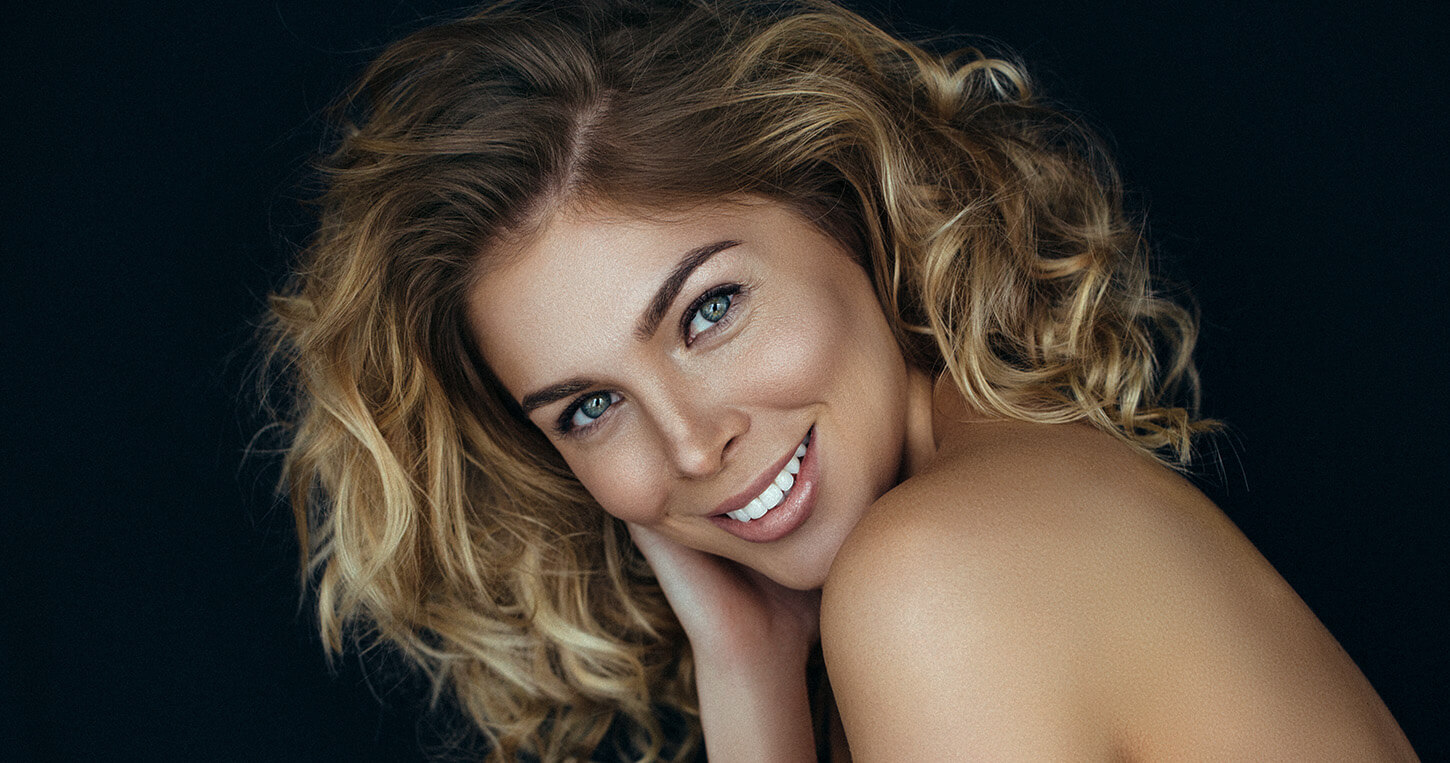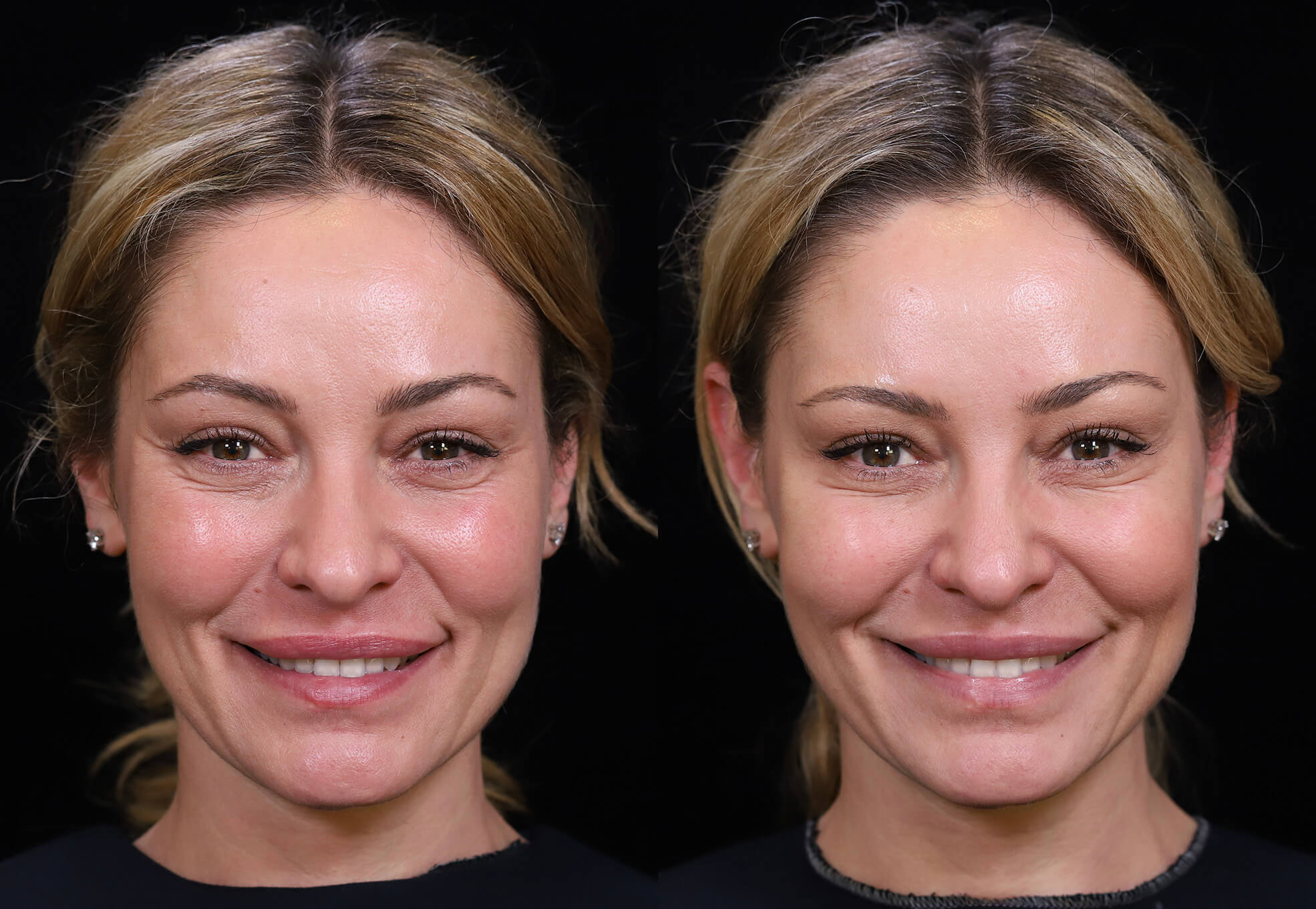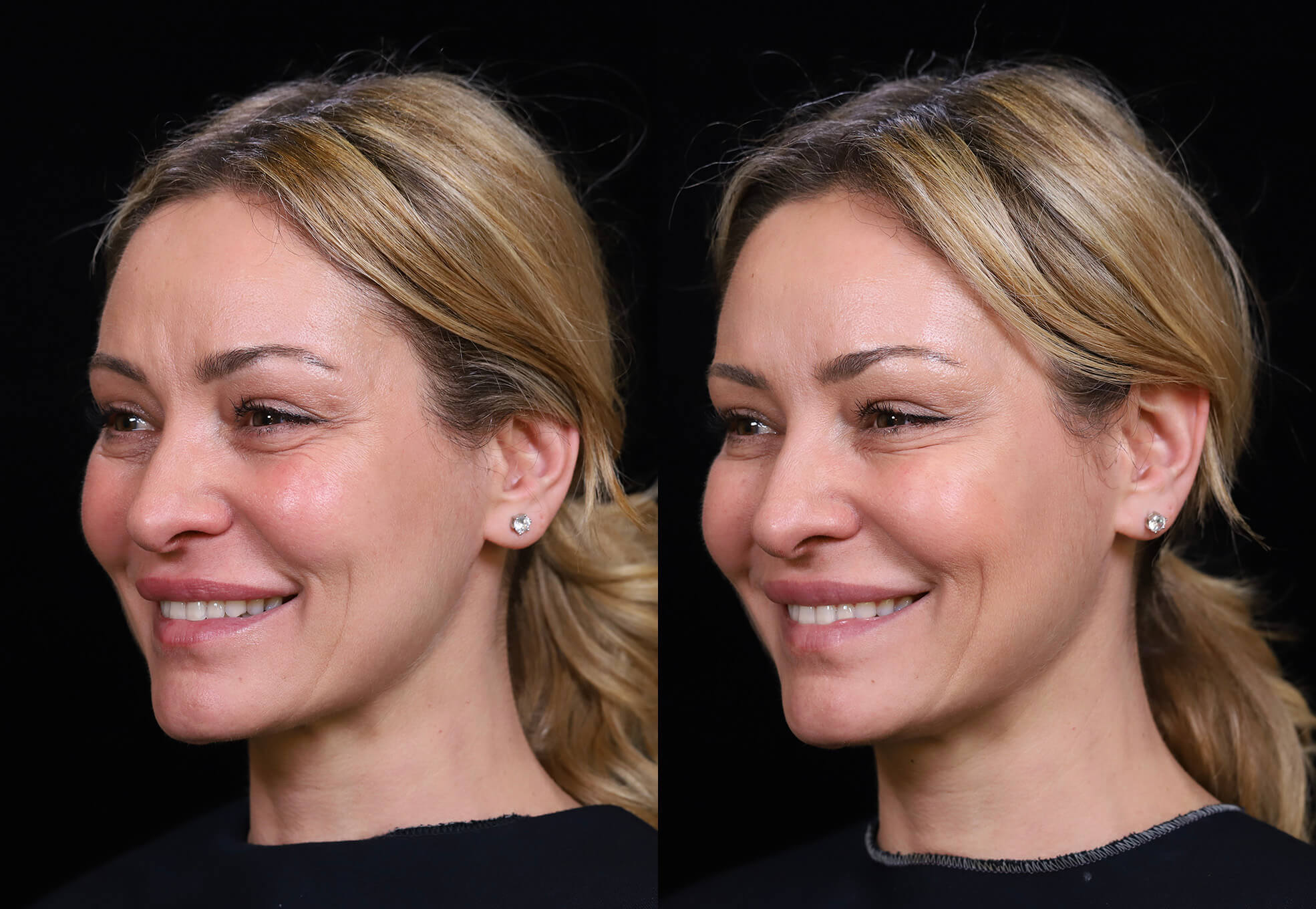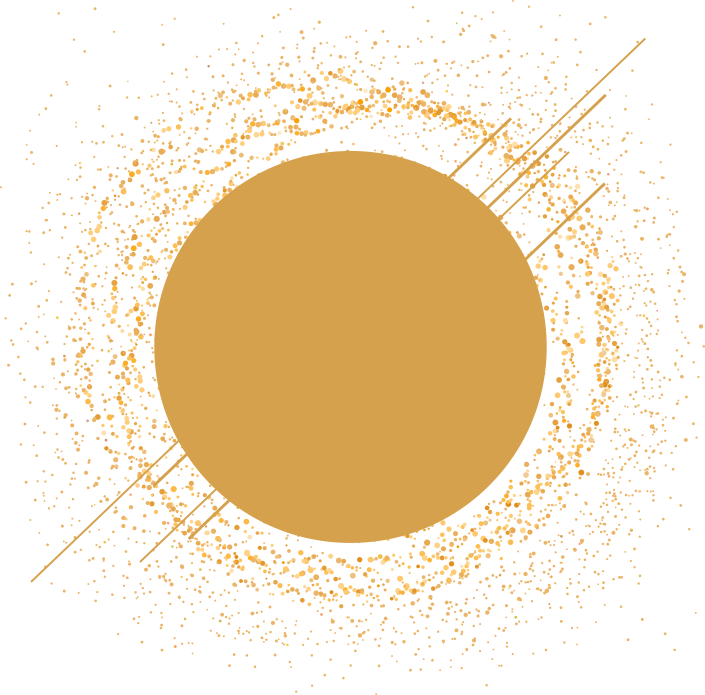reduce FINE LINES & WRINKLES enhance
Smiling, frowning, squinting and even chewing – basically any facial movement – can eventually lead to one of the most common signs of ageing: rhytids (wrinkles). These commonly occur between the eyebrows (frown lines), on the forehead, and around the outer corners of the eyes (Crow’s feet). They may also be found around the mouth, lips, nose and cheeks.
Having wrinkles is not necessarily an unattractive feature. Rather it is the location, severity and symmetry of the wrinkles that are more important. Depending on the affected areas, they can make a face look tired, aged, and even angry. Wrinkles can be divided into dynamic lines, apparent on facial expression, or static lines, which are visible even at rest. Typically, dynamic lines develop into static lines through a “wear and tear” over some time as a result of repetitive strong muscle contraction.
Dynamic lines, as well as mild to moderate static lines, can be treated non-surgically in a number of ways. These include, for example, BOTOX® and related botulinum toxins, which work by temporarily reducing the activity of the muscles that are responsible for causing the skin wrinkles. However, more severe static lines may also require additional treatment with cosmetic fillers or, in more advanced stages, skin resurfacing procedures such as lasers or chemical peels. Used as a corrective treatment, as well as for maintenance and prevention, these different modalities are the cornerstone of an effective facial rejuvenation strategy in combination with evidence-based skincare.





 How long do results last?
How long do results last? 





